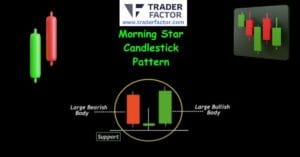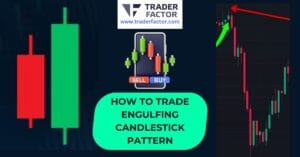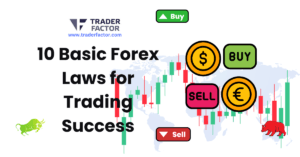You might not be aware, but the forex market is like a pulsating beast, constantly moving and changing, and it’s the trader’s job to tame it.
If you’re looking to get your feet wet in the world of forex trading, scalping could be a viable strategy for you. This trading style focuses on making numerous trades throughout the day, trying to take advantage of small price fluctuations.
But how do you navigate the turbulent waters of the forex market? What strategies can help you maximize profits and minimize losses?
Well, you’re about to uncover five of the most effective forex scalping strategies that could potentially lead you to success. But bear in mind, while they might seem simple on the surface, each demands a unique blend of discipline, risk management, and swift decision-making skills.
Table of Contents
ToggleUnderstanding Forex Scalping Basics
In the vast world of Forex trading, scalping stands out as a fast-paced strategy that focuses on making small, quick profits from currency exchange fluctuations. It’s a game of speed and precision that you’ll need to master.
It’s not just about making quick trades, but understanding scalping indicators is crucial to your success. These indicators are your roadmap, showing you when to enter or exit a trade for maximum profit. They’re not a guarantee, but they’re a tool to help you make informed decisions. For instance, you might use moving averages to identify potential opportunities, or the Relative Strength Index (RSI) to gauge market conditions. You’ve got to understand these indicators to stand a chance.
But there’s more to it than just making the trades. You also need a firm grasp on scalping risk management. This is where you set your stop-loss orders, deciding how much you’re willing to lose on a trade before you step out. Remember, you’re playing a fast game. The market can change in a blink, and without proper risk management, you could find yourself in hot water.

Strategy One: Trend Following Scalping
Dive headfirst into trend following scalping, a strategy that capitalizes on the direction of the market trend to make quick, successive trades. This strategy is all about identifying trends in scalping and making the most out of them.
Here’s how you can do it:
- Identify the Direction of the Trend: Look for an increase or decrease in currency prices. If they’re consistently moving in one direction, that’s your trend.
- Enter the Trade: Once you’ve found your trend, it’s time to dive in. Remember, you’re aiming for quick, successive trades.
- Monitor the Trade: Keep an eye on your trade. If the trend continues in your favor, great! If it starts to shift, you’ll need to be ready to exit.
- Exit the Trade: Risk management in trend following is key. Knowing when to exit a trade can be just as important as knowing when to enter one. If the trend shifts, get out.

Strategy Two: Breakout Scalping
For an adrenaline-fueled approach to forex scalping, you’ll want to try breakout scalping, which takes advantage of sudden price jumps to make quick profits. Breakout Timing is critical here. You’re watching for significant price movements that break through a previously identified resistance or support level.
Scalping Volatility becomes the name of the game. You’ll notice that breakout events often coincide with increased volatility. That’s your cue to jump in and scalp your profits before the market corrects itself.
However, this strategy isn’t for the faint-hearted. You need to be quick on your feet and ready to make split-second decisions. It’s about identifying the right moment to enter and exit the market, and that requires both sound judgment and a solid understanding of forex indicators.
Keep in mind, though, that while breakout scalping can yield significant profits, it also carries high risk. You must have a clear-cut exit strategy to limit potential losses. If you’re wrong about the breakout, you could face substantial losses.
In short, breakout scalping is a high-octane, high-reward strategy that requires a deep understanding of market dynamics, a sharp eye for Breakout Timing, and an aptitude for Scalping Volatility.

Strategy Three: Reversal Trading Scalping
Often, you’ll find reversal trading scalping to be a go-to strategy when you’re eager to exploit quick shifts in market trends. This strategy requires a keen eye for reversal pattern identification and a solid understanding of counter trend techniques.
Here’s a four-step guideline to help you master this method:
- Identify a Trend: Look for a clear upward or downward trend in the market. This forms the basis of your reversal trading strategy.
- Spot the Reversal: Here’s where reversal pattern identification comes in. Watch for signs that the trend is about to change direction. This could be candlestick patterns, key price levels, or other technical signals.
- Enter the Trade: Once you’ve identified a potential trend reversal, enter a trade in the opposite direction of the initial trend. This is a counter trend technique that can yield quick profits if timed correctly.
- Exit the Trade: Set a tight stop loss and take profit level. The goal of scalping is to make small, fast profits, so you don’t want to hold onto the trade for too long.

Strategy Four: Price Action Scalping
While the reversal trading strategy keeps you on your toes, another approach you can use is price action scalping. This strategy is all about analyzing and interpreting the market’s price movements. It’s a method that requires you to be on the ball, as you’ll need to quickly identify potential trading opportunities based on price action alone.
Scalping volatility plays a significant role in this strategy. You’ll rely on short-term price fluctuations, buying low and selling high within a very short time frame. It’s a fast-paced strategy that can yield profits, but it also comes with its own set of challenges.
One of those challenges is liquidity considerations. High liquidity means more opportunities for scalping, as you’ll be able to enter and exit trades more easily. However, low liquidity can lead to slippage, which can eat into your profits.

In price action scalping, you’re not just watching the numbers, you’re interpreting them. You’re looking for patterns, trends and breaks in the market’s rhythm. If you’re quick on your feet and have a keen eye for detail, price action scalping could be an effective strategy for you to consider.
Frequently Asked Questions

What Is the Best Time to Perform Forex Scalping?
You’ll find the best time to perform forex scalping is when the market’s most active, typically during the overlap of London and New York sessions. Scalping indicators and timing influence can greatly boost your success.
How Does Forex Scalping Vary From Other Trading Strategies?
Forex scalping differs as it demands quick decisions, precise timing, and an understanding of Scalping Psychology. You’re choosing a Scalping Indicator that’ll provide real-time data to take advantage of small price changes quickly.
How Much Initial Capital Is Typically Required for Forex Scalping?
You don’t need a huge initial capital for forex scalping. It’s more about scalping equipment costs and brokerage selection. A few hundred dollars can get you started, but it’s your strategy that’ll drive success.

What Are the Potential Risks Involved in Forex Scalping?
In Forex scalping, you’re exposed to risks like market volatility and rapid price changes. It’s crucial to understand scalping psychology and implement solid risk management strategies to mitigate these potential pitfalls.
Can Forex Scalping Be Automated and if So, How?
Yes, forex scalping can be automated using scalping software. It’s efficient but don’t forget, automated strategies have drawbacks. They lack human judgment and can’t adjust to market changes as intuitively as you can.
Conclusion
So, there you have it! You’ve learned about the top 5 effective forex scalping strategies – Trend Following, Breakout, Reversal Trading, and Price Action Scalping.
Remember, it’s all about making quick, small profits. You’ll need patience and discipline to master these strategies. But don’t worry, with practice, you’ll get the hang of it.
Just stay focused, keep learning, and you’re on your way to becoming a successful forex scalper. Good luck!
Disclaimer:
All information has been prepared by TraderFactor or partners. The information does not contain a record of TraderFactor or partner’s prices or an offer of or solicitation for a transaction in any financial instrument. No representation or warranty is given as to the accuracy or completeness of this information. Any material provided does not have regard to the specific investment objective and financial situation of any person who may read it. Past performance is not a reliable indicator of future performance.















